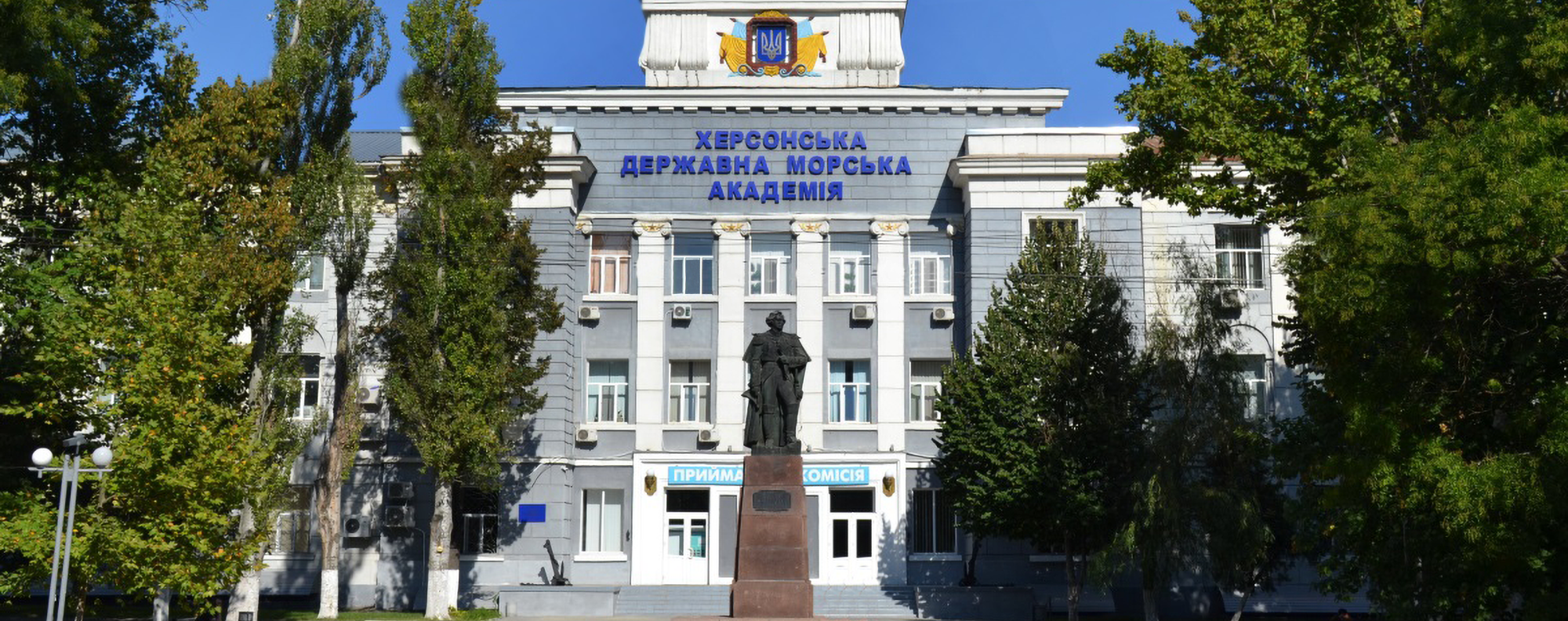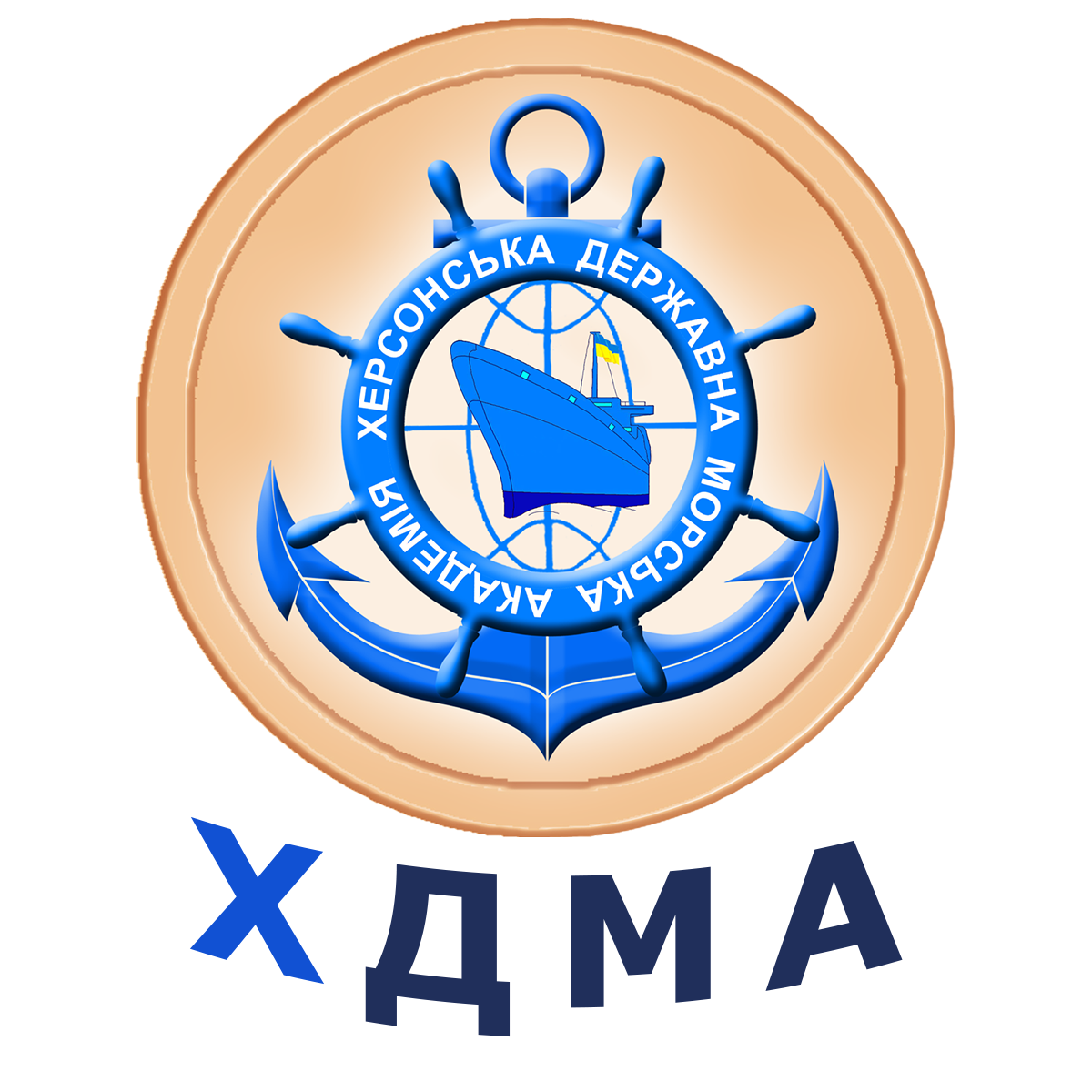Репозитарій
Ласкаво просимо до репозитарію Херсонської державної морської академії!
Репозитарій ХДМА – це електронний архів, що виконує функції накопичення, систематизації, зберігання та
забезпечення довготривалого відкритого доступу до праць професорсько-викладацького складу.

Фонди
Виберіть фонд, щоб переглянути його зібрання.
Нові надходження
Enhancing language instruction effectiveness with the help of maritime English teachers’ lifelong learning.
(ХДМА, 2025-12-04) Юрженко А.Ю.; Yurzhenko A.Y.; Дягилева О.С.; Diahyleva O.S.; Кононова О.Ю.; Kononova O.Y.; Бевзенко Ю.Ю.; Bevzenko Y.Y.
Modern teachers should be always updated with the latest teaching methods. Many teachers take advanced training courses, participate in workshops, and attend conferences to stay current. It is also important for each teacher to share their experience with colleagues, especially if this experience has positive results among students who are mastering different disciplines.
Сучасні викладачі повинні завжди бути в курсі найновіших методів навчання. Багато викладачів проходять курси підвищення кваліфікації, беруть участь у семінарах та відвідують конференції, щоб бути в курсі подій. Також важливо, щоб кожен викладач ділився своїм досвідом з колегами, особливо якщо цей досвід має позитивні результати серед здобувачів, які опановують різні дисципліни.
Моделювання і дослідження систем автоматичного управління в судновій енергетиці.
(ХДМА, 2025-12-03) Дощенко Г.Г.; Doshchenko H.; Наговський Д.А.; Nahovskyi D.
У статті розглядаються аспекти моделювання та аналізу систем автоматичного управління судновими енергетичними установками (СЕУ). Основна увага приділена структурі та функціональним можливостям засобів автоматизації, що забезпечують управління, контроль та сигналізацію стану головного двигуна, дизель-генераторів і загальносуднових систем. Підкреслюється важливість моделювання як інструменту підвищення ефективності управління та зменшення ризику аварійних ситуацій, зокрема у перехідних режимах роботи. Запропоновано використання моделі орієнтованої системи підтримки прийняття рішень, що дозволяє знизити ймовірність помилок обслуговуючого персоналу та забезпечити підвищення надійності СЕУ. Розглянуто інтеграцію в систему управління блоків моделювання та підтримки рішень, які реалізуються за допомогою математичних моделей і методів нечіткого висновку. Описано методи моделювання надійності енергетичних установок шляхом структурного аналізу та розрахунку середнього часу безвідмовної роботи. У статті також аналізується взаємозв’язок між енергетичним профілем судна, його призначенням і конфігурацією енергетичної установки. Результати моделювання використовуються для розробки модульного рівня керування, що дозволяє адаптувати систему автоматизації до змін профілю навантаження. Запропонований підхід сприяє підвищенню ефективності та стабільності функціонування суднових електростанцій, а також слугує основою для подальших удосконалень в галузі автоматизованого управління морськими енергетичними системами.
Аналітичний розрахунок оцінок ризику морських та мультимодальних еколого-орієнтованих перевезень з урахуванням надійності роботи технічних засобів та кермового управління судном у разі виникнення надзвичайних ситуацій в Україні.
(Прикладні питання математичного моделювання., 2024) Шарко О.В.; Sharko A.V.; Клевцов К.М.; Klevtsov K.M.; Букетов А.В.; Buketov A.V.; Сапронов О.О.; Sapronov O.; Васильченко Г.Ю.; Vasylchenko G.Yu.; Соценко В.В.; Sotsenko V.V.; Онишко Д.М.; Onyshko D.М.
У роботі представлено аналіз та системний підхід до визначення сутності понять «інтермодальні» та «мультимодальні» перевезення, ймовірність виникнення та ймовірність тяжкості непередбачуваних чи передбачуваних наслідків із погляду IMO та стандарту ISO8402:1995/BS 4778. У теоретичних дослідженнях використано аналітичні методи системного підходу, теорії ймовірності, методи математичної статистики та експертних оцінок. Визначено проблеми розвитку еколого-орієнтованих комбінованих перевезень з урахуванням надійності роботи технічних засобів та кермового управління судна у разі виникнення надзвичайних ситуацій. Проаналізовано причини сталого розвитку мультимодальних перевезень в Україні та пропоновані шляхи їх практичного вирішення. На основі пропонованих методів дослідження відпрацьовано транспортні коридори мережі TEN-T країн Західної Європи та пропозиції Європейської Комісії щодо зміни транс’європейської транспортної мережі (TEN-T), яка включає українські логістичні маршрути. У роботі зазначено, що у практиці оцінки ризиків переважно використовуються методи експертних оцінок. Утім, експерти також звертаються до статистичних даних, якщо такі є. Тим часом, якщо говорити про створення систем управління ризиками, то одним із необхідних елементів таких систем слід уважати систему моніторингу, збору та систематизації статистичних даних щодо аварійності, втрати/псування вантажів, загибелі людей тощо. На прикладі мультимодального перевезення вантажів за маршрутом «Балтійське море – Адріатичне море та Рейн-Дунай» розглянуто два основні складники маршруту. На основі аналізу аварійності встановлено першопричини виникнення аварій та розглянуто оцінку ризику появи аварій, транспортних пригод у разі спільної появи двох та більше залежних подій, наведено приклад практичної реалізації пропонованого методу. Аналітичний розрахунок оцінок ризику морських та мультімодальних еколого-оріентованих перевезень з урахуванням надійності роботи технічних засобів та кермового управління судна у разі виникнення надзвичай-них ситуацій в Україні довів, що рівень допустимого ризику визначається шляхом порівняння ціни ризику з вели-чиною очікуваного прибутку, який отримає судновласник під час виконання рейсу. Якщо величина очікуваного прибутку вище ціни ризику, такий ризик можна вважати допустимим (передбачається, що загрози життю людей немає).
The paper presents an analysis and a systematic approach to determining the essence of the concept of «intermodal» and «multimodal» transportation, the probability of occurrence and the probability of the severity of unforeseen or foreseeable consequences from the point of view of the IMO and the ISO8402:1995/BS 4778 standard. Analytical methods of the system approach, probability theory, methods of mathematical statistics and expert evaluations were used in theoretical studies. The problems of the development of environmentally-oriented combined transportation, taking into account the reliability of the operation of technical means and steering control of the ship in the event of emergency situations, have been identified. The reasons for the sustainable development of multimodal transportation in Ukraine are analyzed, and ways of their practical solution are proposed. On the basis of the proposed research methods, the transport corridors of the TEN-T network of the countries of Western Europe and the proposals of the European Commission regarding the change of the trans-European transport network (TEN-T), which includes Ukrainian logistics routes, have been worked out. The paper states that in the practice of risk assessment, expert assessment methods are mainly used. However, experts also refer to statistical data, if any. Meanwhile, if we talk about the creation of risk management systems, then one of the necessary elements of such systems should be considered a system of monitoring, collection and systematization of statistical data regarding accidents, loss/damage of goods, deaths of people, etc. The two main components of the route are considered on the example of multimodal cargo transportation along the «Baltic Sea-Adriatic Sea and Rhine-Danube» route. Based on the accident analysis, the root causes of accidents are established and the risk assessment of accidents and traffic accidents in case of the joint occurrence of two or more dependent events is considered, an example of the practical implementation of the proposed method is given. Analytical calculation of risk assessments of maritime and multimodal environmentally-oriented transportation, taking into account the reliability of technical equipment and ship steering in the event of emergency situations in Ukraine, proved that the level of acceptable risk is determined by comparing the risk price with the amount of expected profit that the ship owner will receive during the voyage . If the value of the expected profit is higher than the risk price, such a risk can be considered acceptable (it is assumed that there is no threat to people's lives).
Модернізація системи оцінки напружено-деформованого стану рухового комплексу елементів валопроводу танкера.
(ХДМА, 2021) Шарко О.В.; Sharko A.V.
Запропонована модель визначення залишкового ресурсу металевих зразків в умовах комбінованої деформації за даними акустико-емісійних вимірювань на відміну від відомих аналогів дозволяє отримати деформаційні і міцнісні характеристики матеріалів конструкції не залежно від форми і виду навантаження з урахуванням сумарного дії напруженодеформованого стану аж до моменту руйнування без спрощують гіпотез силового і кінематичного характеру. Висока інформативність і точність отримання деформаційних і міцнісних характеристик матеріалів за результатами АЕ вимірювань дозволяє підвищити рівень вірогідності стану і ресурсних параметрів матеріалу елементів конструкції при експлуатації.
The proposed model for determining the residual life of metal samples under conditions of combined deformation according to acoustic emission measurements, unlike known analogues, allows obtaining deformation and strength characteristics of structural materials regardless of the shape and type of load, taking into account the total effect of the stressed-deformed state up to the moment of failure without simplifying hypotheses of a force and kinematic nature. High informativeness and accuracy of obtaining deformation and strength characteristics of materials according to the results of AE measurements allows increasing the level of probability of the state and resource parameters of the material of structural elements during operation.
Діагностика та вимірювальний контроль елементів суднового енергетичного обладнання в умовах невизначеності характеру навантажень.
(Київський інституту водного транспорту імені гетьмана Петра Конашевича-Сагайдачного Державний університет інфраструктури та технологій, 2022) Шарко О.В.; Sharko A.V.; Яненко А.В.
На основі синтезу наукових результатів щодо вирішення допоміжних завдань взаємозв'язку акустичних та механічних властивостей матеріалів та узагальнення досвіду експлуатації елементів СЕУ розроблено систему ідентифікації та діагностики технічного стану елементів СЕУ. Доведено, що технічний стан матеріалів елементів СЕУ може перебувати в кінцевій множині станів, яка складається з підмножини працездатних станів та підмножини непрацездатних станів. Умову працездатності задають у просторі діагностичних показників – областю працездатності, у межах якої вироби виконують своє функціональне призначення. Визначено, що моніторинг стану за основними параметрами дозволяє полегшити підтримку працездатності суднового обладнання у морі та зменшити обсяг техобслуговування.
Based on the synthesis of scientific results on solving auxiliary problems of the relationship between acoustic and mechanical properties of materials and generalization of experience in the operation of SPP elements, a system for identifying and diagnosing the technical condition of SPP elements has been developed. It has been proven that the technical condition of materials of SPP elements can be in a finite set of states, which consists of a subset of serviceable states and a subset of inoperable states. The condition of operability is set in the space of diagnostic indicators - the area of operability within which the products perform their functional purpose. It has been determined that condition monitoring by basic parameters makes it easier to maintain the operability of ship equipment at sea and reduce the amount of maintenance.
